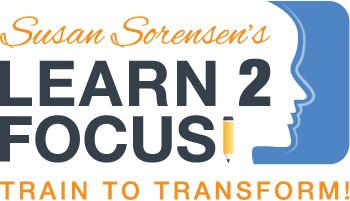Auditory and Visual Processing Disorders: What's the Cause?
/Are you ready to learn about another major primitive reflex?
Today we’re going to talk about the tonic labryinthine reflex (TLR), but first, a quick refresher: Primitive reflexes, or infantile reflexes, begin developing from the time the child is in the uterus. They are repetitive, involuntary or automatic movements in response to stimuli that are essential for the baby’s healthy development. As the baby grows, ideally these primitive reflexes will no longer be active and disappear as they become unnecessary. However, if primitive reflexes are still present at a certain age, it can be a sign of nervous system damage or lesions in the brain.
The tonic labryinthe reflex (TLR) acts as a means of helping the baby learn about gravity. While it starts developing inside the mother’s uterus, it’s a way for the baby to master head and neck control once he or she is outside the womb. Not only does this reflex help the baby practice balance, but it also increases muscle tone and develops coordination, posture and correct head alignment.
This reflex should become integrated by the time the child is six months old. If the reflex remains activated, the child may experience balance and coordination difficulties, hunched posture, poor muscle tone, difficulty judging distance, depth, space and speed, visual, speech and auditory difficulties and more.
I’ve spoken to many parents who come to me for help, and I admire their determination to find a reason why their child may be suffering from ADHD, autism or other developmental disorders. Sometimes, this cause is illusive and little seems to help. Yet when we address primitive reflexes, more often than not, we see positive changes begin to occur in challenges which appeared to be quite resistant. Frequently, the results of a reflex integration program create a rapid turn around.
Here's just one quick story: This past summer a 6 year old child with ADHD and sensory processing issues came to see me, and we started him on a reflex integration program, along with Interactive Metronome. The result? He was off his meds within six weeks! His parents took a break from the exercises before the reflexes were fully integrated, and the child’s issues began cropping up again. We went back to the home reflex program, and his challenges again completely disappeared both in school at at home! It was again very apparent to see that residual primitive reflexes can have an effect on our children’s problems.
The takeaway? There is nothing more uplifting than seeing brain training and reflex training all the through to the end, and seeing improvements in the child. I just want to encourage all parents: You are the driving force behind your child’s betterment. When you and I both are committed to training and following up on home exercises, great things happen. Let’s keep moving forward in helping our kids achieve their true potential!

